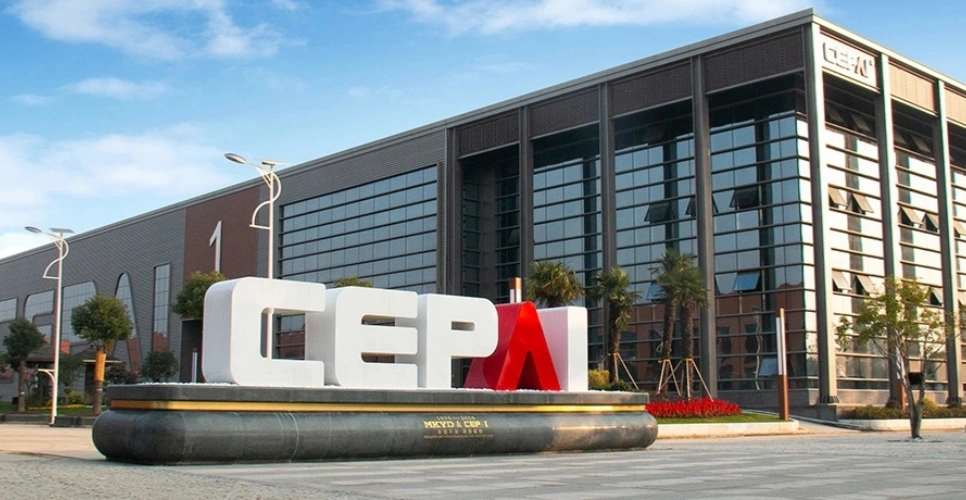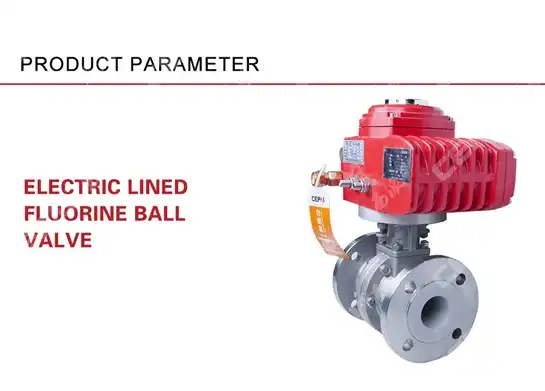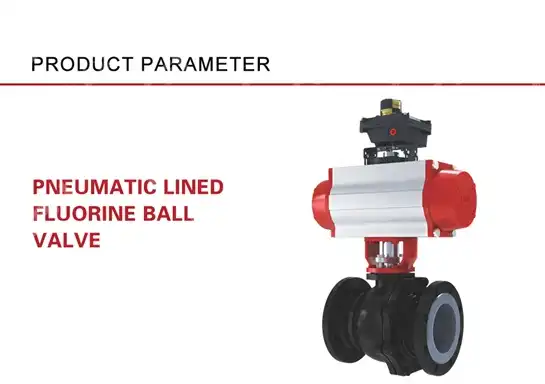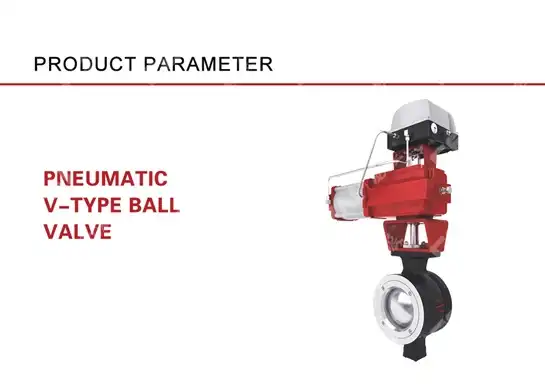How to Choose the Right Pneumatic Actuator for Your Ball Valve?
Imagine a critical industrial process suddenly grinding to a halt because of a single component failure - the wrong pneumatic actuator choice for your ball valve system. This seemingly small decision can cost thousands in downtime, maintenance, and safety risks. With countless actuator options flooding the market, selecting the right pneumatic actuator for your ball valve becomes a complex challenge that demands technical expertise and careful consideration. Whether you're managing a petrochemical plant, power generation facility, or water treatment system, the performance of your Pneumatic Ball Valve directly depends on choosing the correct actuator that matches your specific operating conditions, pressure requirements, and environmental demands.

Understanding Pneumatic Ball Valve Systems and Their Critical Components
-
The Fundamentals of Pneumatic Ball Valve Operation
Pneumatic Ball Valve systems represent sophisticated automation solutions that combine the reliable flow control capabilities of ball valves with the power and responsiveness of compressed air actuation. These systems operate by utilizing compressed air to rotate the ball within the valve body, providing precise on-off or modulating control of fluid flow. The integration of pneumatic actuators with ball valves creates a powerful combination that delivers exceptional performance in demanding industrial applications where reliability, speed, and safety are paramount considerations. The core principle behind pneumatic ball valve operation involves the conversion of compressed air energy into mechanical rotational motion through the actuator mechanism. When compressed air enters the actuator chamber, it creates pressure differential that drives the piston or vane mechanism, which in turn rotates the valve stem and ball through a predetermined angle, typically 90 degrees for full opening or closing. This pneumatic actuation method offers significant advantages over manual operation, including faster response times, consistent torque output, and the ability to integrate with automated control systems for enhanced process optimization. Modern Pneumatic Ball Valve systems incorporate advanced features such as position feedback sensors, fail-safe mechanisms, and intelligent control capabilities that enable seamless integration with distributed control systems and supervisory control and data acquisition platforms. These technological enhancements allow operators to monitor valve position, diagnose potential issues, and implement predictive maintenance strategies that minimize unexpected downtime and maximize system reliability across various industrial applications.
-
Key Performance Parameters for Actuator Selection
Selecting the appropriate pneumatic actuator for your ball valve requires careful evaluation of multiple performance parameters that directly impact system effectiveness and reliability. Torque requirements represent the most critical factor, as the actuator must provide sufficient rotational force to operate the ball valve under all expected operating conditions, including maximum differential pressure scenarios. The required torque varies significantly based on valve size, pressure rating, seat design, and the specific characteristics of the process media being controlled. Operating pressure specifications constitute another fundamental consideration, as the pneumatic actuator must function reliably within the available compressed air supply pressure range while maintaining adequate safety margins. Most industrial Pneumatic Ball Valve applications utilize supply pressures ranging from 4 to 6 bar, though specialized applications may require higher or lower pressure ranges. The actuator sizing calculations must account for pressure drops through supply lines, filters, and control components to ensure adequate operating pressure reaches the actuator under all conditions. Response time requirements significantly influence actuator selection, particularly in applications where rapid valve operation is essential for safety or process control purposes. Factors affecting response time include actuator size, air supply pressure, supply line diameter, and the presence of speed control devices. Emergency shutdown applications typically require response times measured in seconds, while normal process control applications may accommodate longer response times that prioritize smooth operation over speed.
Torque Calculations and Sizing Requirements for Pneumatic Ball Valve Applications
-
Determining Break-Away and Running Torque Requirements
Accurate torque calculation forms the foundation of proper pneumatic actuator sizing for ball valve applications. Break-away torque represents the maximum torque required to initiate valve movement from a static position, typically occurring when the valve has been closed for extended periods or when operating under high differential pressure conditions. This torque value often exceeds running torque by 25-50% due to static friction between sealing surfaces and the initial resistance required to overcome seat compression forces in the Pneumatic Ball Valve assembly. Running torque calculations must consider the continuous torque required to maintain valve rotation throughout the entire 90-degree operating stroke. This parameter accounts for dynamic friction between moving components, fluid drag forces acting on the ball surface, and any mechanical resistance within the valve trim assembly. Proper running torque calculations require detailed knowledge of valve design parameters, including ball diameter, seat material properties, stem seal configurations, and the specific operating conditions under which the valve will function. Safety factors play a crucial role in torque calculations, as pneumatic actuators must provide torque output that exceeds calculated requirements by a predetermined margin to ensure reliable operation under adverse conditions. Industry standards typically recommend safety factors ranging from 1.25 to 2.0 times the calculated maximum torque requirements, depending on the criticality of the application and the reliability requirements of the specific installation. These safety margins account for actuator performance degradation over time, variations in supply pressure, and unexpected operating conditions that may increase torque requirements beyond initial calculations.
-
Environmental Factors Affecting Torque Requirements
Environmental conditions significantly impact the torque requirements for Pneumatic Ball Valve systems, necessitating careful consideration during the actuator selection process. Temperature variations affect both the mechanical properties of valve components and the viscosity characteristics of process fluids, directly influencing the torque required for reliable valve operation. High-temperature applications may cause thermal expansion of valve components, increasing friction between sealing surfaces and requiring higher break-away torque values, while low-temperature conditions may cause material contraction and increased fluid viscosity that affects running torque requirements. Corrosive environments present unique challenges for pneumatic ball valve torque calculations, as corrosion products may accumulate on sealing surfaces and increase friction between moving components over time. The selection of appropriate materials and protective coatings becomes critical in these applications, as does the implementation of regular maintenance procedures to prevent excessive torque buildup due to corrosion-related wear. Actuator sizing must account for potential torque increases over the valve's operational lifetime to ensure continued reliable performance throughout the expected service life. Vibration and shock conditions common in industrial environments can affect both valve performance and actuator torque output capabilities. Excessive vibration may cause wear of internal actuator components, potentially reducing torque output over time, while shock loads may impose instantaneous torque demands that exceed normal operating requirements. The pneumatic actuator selection process must consider these environmental factors to ensure adequate performance margins are maintained throughout the valve's operational life cycle.

Actuator Types and Configuration Options for Enhanced Performance
-
Single-Acting versus Double-Acting Actuator Configurations
The choice between single-acting and double-acting pneumatic actuator configurations represents a fundamental decision that affects both performance characteristics and safety capabilities of Pneumatic Ball Valve systems. Single-acting actuators utilize compressed air to provide torque in one direction while relying on spring return mechanisms to provide closing or opening force when air supply is removed. This configuration offers inherent fail-safe capabilities, automatically positioning the valve in a predetermined safe position during power or air supply failures, making them ideal for emergency shutdown applications and safety-critical processes. Double-acting actuators employ compressed air supply to both chambers of the actuator mechanism, providing powered operation in both opening and closing directions without relying on spring return forces. This configuration delivers superior torque output capabilities and precise position control throughout the entire operating range, making double-acting actuators particularly suitable for modulating control applications where accurate positioning is essential. The absence of spring return mechanisms also eliminates the torque losses associated with spring compression, allowing more efficient utilization of available air pressure for valve actuation. The selection between single-acting and double-acting configurations must consider the specific safety requirements, control precision needs, and fail-safe positioning requirements of each application. Single-acting actuators excel in applications requiring guaranteed fail-safe positioning, while double-acting configurations provide superior performance for precise flow control and applications requiring consistent torque output in both directions. Modern Pneumatic Ball Valve installations often incorporate hybrid approaches, utilizing double-acting actuators with auxiliary spring return or backup air supply systems to combine the benefits of both configurations.
-
Rack and Pinion versus Vane Actuator Technologies
Rack and pinion actuator technology represents the most common pneumatic actuation method for ball valve applications, utilizing linear piston motion converted to rotational output through precision-machined gear mechanisms. This design approach provides excellent torque multiplication capabilities, allowing relatively compact actuator packages to generate high torque outputs suitable for large ball valve applications. Rack and pinion actuators offer precise positioning capabilities, excellent repeatability, and robust construction that withstands harsh industrial environments while maintaining reliable performance over extended service lives. Vane-type pneumatic actuators utilize direct rotational motion generated by compressed air acting on a rotating vane mechanism housed within a cylindrical chamber. This direct-drive approach eliminates the mechanical complexity of gear reduction systems, resulting in more compact actuator packages with fewer internal components subject to wear. Vane actuators typically provide faster response times compared to rack and pinion designs due to reduced internal friction and the absence of gear backlash, making them particularly suitable for applications requiring rapid valve operation or precise position control. The selection between rack and pinion and vane actuator technologies depends on specific application requirements including torque output needs, response time specifications, size constraints, and maintenance considerations. Rack and pinion actuators generally provide higher torque output capabilities and better suitability for high-pressure applications, while vane actuators offer advantages in applications requiring compact installation envelopes, fast response times, or minimal maintenance requirements. Both technologies can provide excellent performance when properly matched to Pneumatic Ball Valve application requirements.
Installation Considerations and System Integration Strategies
-
Mounting Configurations and Space Requirements
Proper mounting configuration selection significantly impacts both the performance and maintainability of Pneumatic Ball Valve installations. Standard ISO 5211 mounting interfaces provide universal compatibility between actuators and ball valves from different manufacturers, ensuring proper alignment and secure mechanical connection. The mounting pattern must accommodate the specific torque output requirements while providing adequate structural support to prevent mechanical stress concentration that could lead to premature failure of either the actuator or valve components. Space envelope considerations play a crucial role in actuator selection, particularly in congested industrial installations where equipment accessibility and maintenance clearances are limited. Compact actuator designs may be necessary in applications with restrictive installation spaces, though size reductions should not compromise torque output or reliability requirements. The installation design must provide adequate clearance for actuator removal and maintenance activities while ensuring proper support for supply air connections, electrical interfaces, and position indication devices commonly integrated with modern Pneumatic Ball Valve systems. Orientation flexibility represents an important consideration for actuator selection, as some designs perform better in specific mounting orientations due to internal spring mechanisms or lubrication distribution patterns. Vertical mounting applications may require special consideration for drainage of condensate from actuator air chambers, while horizontal mounting configurations must account for gravitational effects on internal mechanisms. The selected actuator design should accommodate the required mounting orientation without compromising performance or requiring additional support structures that increase installation complexity and cost.
-
Air Supply System Design and Filtration Requirements
Compressed air quality significantly affects the performance and reliability of pneumatic actuator systems, making proper air treatment and distribution system design essential for successful Pneumatic Ball Valve installations. Air filtration systems must remove particulate contamination, water condensate, and oil vapors that could interfere with actuator operation or cause premature wear of internal components. Industry standards typically require air cleanliness levels of ISO 8573-1 Class 7.4.4 or better for pneumatic actuator applications, necessitating multi-stage filtration systems in most industrial compressed air installations. Pressure regulation and distribution system design must maintain adequate supply pressure to actuators under all operating conditions while providing protection against over-pressurization that could damage internal components. Pressure regulators should be sized to handle the maximum air consumption rates during rapid valve operation while maintaining stable output pressure during low-demand periods. The air distribution system must account for pressure drops through supply lines, fittings, and control devices to ensure adequate operating pressure reaches each actuator location. Air consumption calculations for pneumatic actuator systems must consider both the static air volume required for actuator operation and the dynamic consumption during valve cycling operations. Large actuator installations may require significant air consumption during simultaneous valve operations, necessitating adequate compressor capacity and air receiver sizing to prevent system pressure drops that could affect actuator performance. Proper system design includes provisions for monitoring air consumption rates and identifying potential leakage issues that increase operating costs and reduce system reliability.
Control Integration and Automation Capabilities for Modern Industrial Applications
-
Position Feedback and Monitoring Systems
Modern Pneumatic Ball Valve installations increasingly incorporate sophisticated position feedback systems that provide real-time valve position information to control systems and operators. Position feedback technologies range from simple limit switches that indicate fully open or closed positions to continuous analog position transmitters that provide precise position information throughout the entire valve stroke. These feedback systems enable advanced control strategies including position control loops, diagnostic monitoring, and predictive maintenance programs that enhance overall system reliability and performance. Digital position feedback systems offer enhanced capabilities including valve signature analysis, partial stroke testing, and comprehensive diagnostic information that helps operators optimize maintenance schedules and identify potential issues before they result in equipment failures. Smart positioner technologies can store valve performance data, track operating cycles, and provide alerts when performance parameters deviate from normal ranges. These advanced monitoring capabilities are particularly valuable in critical applications where valve reliability directly impacts safety or production efficiency. Integration of position feedback systems with distributed control systems enables sophisticated control strategies that optimize process performance while maintaining safety system independence where required. The communication protocols used for position feedback must be compatible with existing control system architectures, with common options including analog 4-20mA signals, digital fieldbus protocols, and wireless communication systems. Proper integration ensures seamless operation while maintaining the ability to operate valves independently of the main control system during emergency conditions.
-
Emergency Shutdown and Safety Integration
Emergency shutdown system integration represents a critical consideration for Pneumatic Ball Valve installations in safety-critical applications such as petrochemical processing, power generation, and oil and gas production facilities. Safety instrumented systems require pneumatic actuators to achieve specific safety integrity levels that ensure reliable valve operation during emergency conditions. The actuator selection and installation design must comply with relevant safety standards including IEC 61508 and IEC 61511, which specify requirements for functional safety of electrical, electronic, and programmable electronic safety-related systems. Fail-safe operation modes must be carefully designed to ensure valves move to safe positions during loss of air supply, electrical power, or control system failures. Single-acting actuators with spring return mechanisms provide inherent fail-safe capabilities, while double-acting actuators may require additional safety systems such as backup air supplies, quick exhaust valves, or emergency shutdown solenoid valves. The fail-safe position selection must consider the specific process safety requirements, with some applications requiring fail-open operation while others mandate fail-closed positioning for safe process shutdown. Partial stroke testing capabilities enable periodic verification of valve operation without disrupting normal process operations, helping to maintain safety system availability while complying with functional safety requirements. Advanced pneumatic actuator systems can perform automated partial stroke tests that move the valve through a limited range of motion while monitoring response time, torque requirements, and position accuracy. These testing capabilities help identify potential issues with valve operation before they compromise safety system effectiveness during actual emergency conditions.
Conclusion
Selecting the right Pneumatic Ball Valve actuator requires systematic evaluation of torque requirements, environmental conditions, control integration needs, and safety considerations. Success depends on understanding the complex interactions between actuator characteristics, valve specifications, and application-specific requirements while maintaining adequate safety margins for reliable long-term performance.
Cooperate with CEPAI Group Co., LTD.
CEPAI Group Co., LTD. stands as a premier China Pneumatic Ball Valve manufacturer with over 15 years of specialized experience in high-end energy valve manufacturing. As a leading China Pneumatic Ball Valve supplier, our state-of-the-art 56,000 square meter facility features the longest high-precision intelligent manufacturing flexible production line in the Asia Pacific region, ensuring exceptional quality and precision for every High Quality Pneumatic Ball Valve we produce.
Our company holds prestigious certifications including API Q1, API 6A, API 6D, ISO 9001, and CE certifications, establishing us as a trusted China Pneumatic Ball Valve factory serving global markets. We have earned supplier qualifications with industry leaders including PetroChina, Sinopec, and CNOOC, while our products serve major corporations across petrochemical, power generation, and industrial automation sectors.
As your preferred China Pneumatic Ball Valve wholesale partner, we offer comprehensive pre-sales technical consultation, customized solutions, and extensive after-sales support including remote monitoring and intelligent service capabilities. Our Pneumatic Ball Valve for sale options encompass various configurations designed for demanding applications with competitive Pneumatic Ball Valve price structures that deliver exceptional value.
Ready to enhance your operations with premium pneumatic ball valve solutions? Contact our technical specialists at cepai@cepai.com to discuss your specific requirements and receive expert guidance on selecting the optimal actuator and valve combination for your application. Save this comprehensive guide for future reference as your trusted resource for pneumatic ball valve selection and optimization strategies.
FAQ
Q: What factors determine the torque requirements for a pneumatic ball valve actuator?
A: Torque requirements depend on valve size, differential pressure, seat design, media properties, and environmental conditions. Break-away torque typically exceeds running torque by 25-50% due to static friction.
Q: Should I choose a single-acting or double-acting pneumatic actuator for my ball valve?
A: Single-acting actuators provide fail-safe spring return operation ideal for safety applications, while double-acting actuators offer superior torque output and precise position control for modulating service.
Q: How do I calculate the proper safety factor for pneumatic actuator sizing?
A: Industry standards recommend safety factors of 1.25 to 2.0 times calculated maximum torque requirements, depending on application criticality and reliability needs.
Q: What air quality standards should I maintain for pneumatic ball valve actuators?
A: Maintain ISO 8573-1 Class 7.4.4 or better air cleanliness with proper filtration, pressure regulation, and condensate removal to ensure reliable actuator operation and longevity.
References
1. "Pneumatic Actuators: Selection and Sizing Guidelines" by Industrial Valve Technology Association, Valve Industry Standards Committee, 2023.
2. "Ball Valve Design and Application Handbook" by American Petroleum Institute, Technical Standards Division, 2022.
3. "Actuated Valve Systems: Performance and Reliability Analysis" by International Society of Automation, Process Control Systems Committee, 2023.
4. "Industrial Pneumatic Systems: Design, Installation, and Maintenance" by Fluid Power Society, Technical Publication Committee, 2022.
_1746598563385.webp)
Get professional pre-sales technical consultation and valve selection services, customized solution services.

About CEPAI


